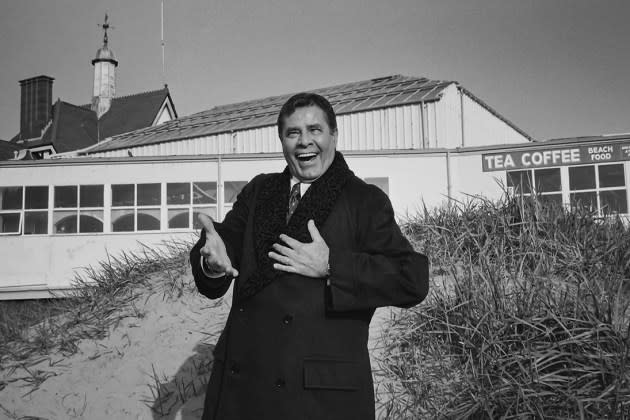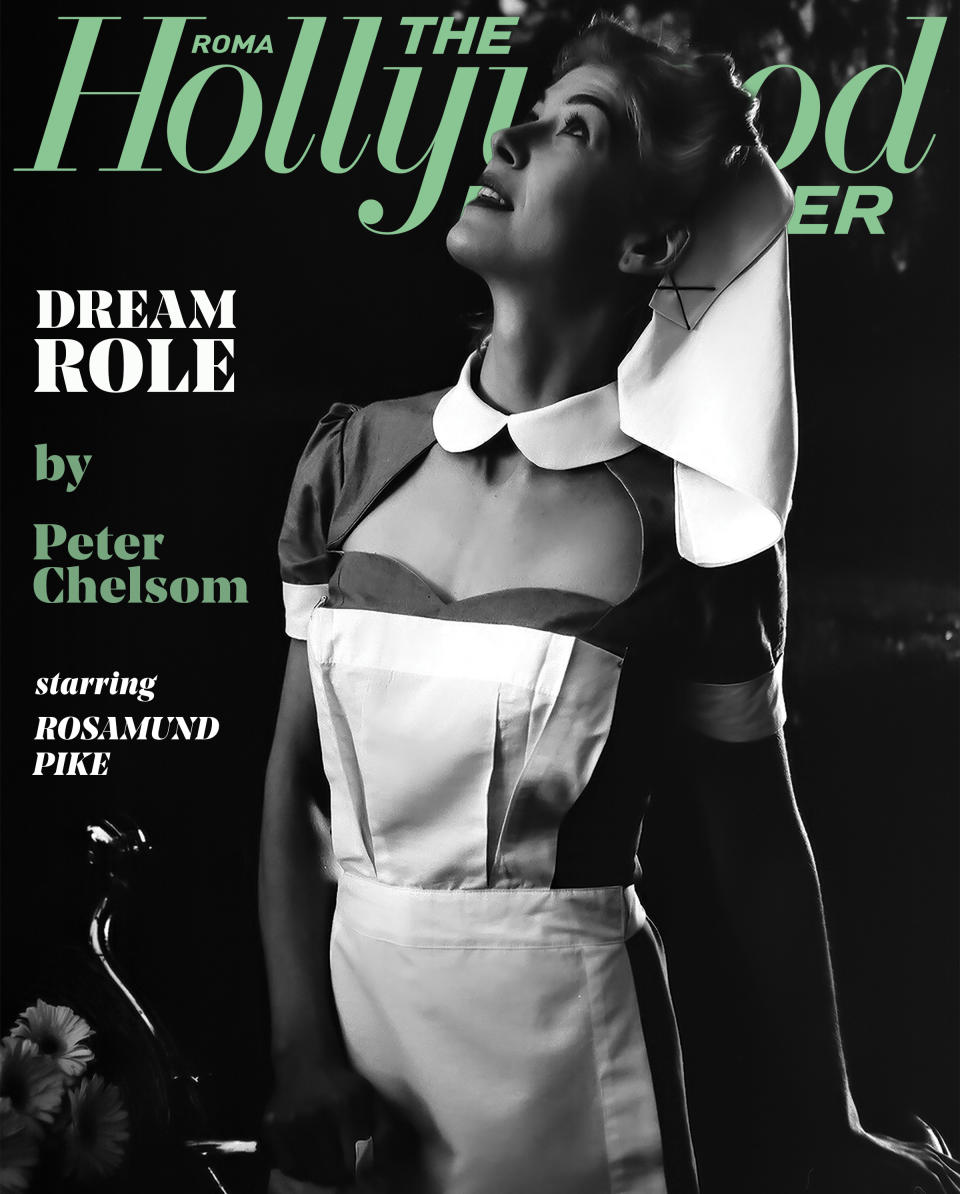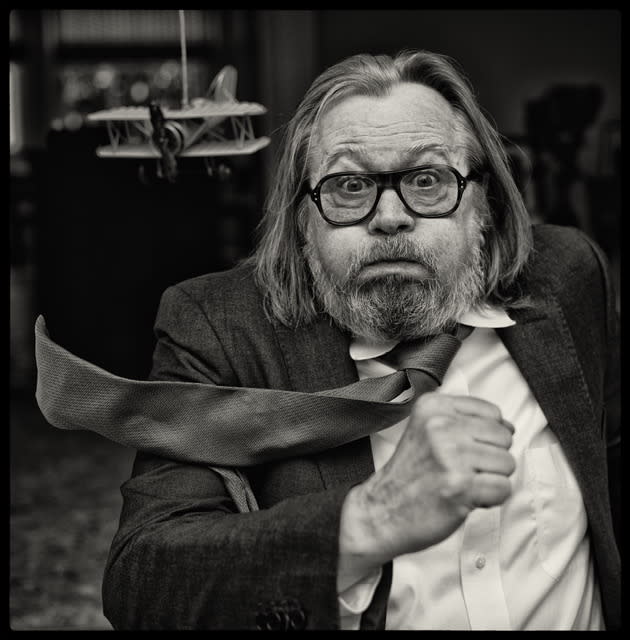Filmmaker Peter Chelsom Unveils His Private Photography Collection in Tuscany

British filmmaker Peter Chelsom became obsessed with photography at the age of 13 after his father gifted him a Kodak Retinette 1B camera for his birthday. “Suddenly everything became photography,” says the veteran director of films like 2001’s Serendipity, starring John Cusack and Kate Beckinsale and the 2004 Jennifer Lopez-starrer Shall We Dance. “I was obsessed with it. And that’s why I became a filmmaker.”
Now the director, who has been a resident of the Lunigiana region of Tuscany for many years, is preparing to host Dream Role, an exhibition of 50 photographs, many of them previously unpublished, that capture not only moments with the famous actors he’s worked with over the years but also everyday moments and childhood places from Chelsom’s life.
More from The Hollywood Reporter
Banff: 'The Last of Us' Earns Grand Jury Prize, Best Drama Honor
Jin Is Back: First Member of Global Sensation BTS Completes Military Service
Looney Tunes Movie 'The Day the Earth Blew Up' Debuts to Boisterous Laughter at Annecy
From June 22 to July 14, 2024, at the historic Fortino Leopoldo I in Forte dei Marmi, on the Tuscan coast, Chelsom will display his private collection, featuring a host of stars he’s worked with, including Rosamunde Pike, Gary Oldman, Jerry Lewis, Jennifer Lopez, Goldie Hawn, Diane Keaton, Warren Beatty, John Cusack, Jean Reno and the Foo Fighters’ Dave Grohl.
The filmmaker spoke to THR Roma from his home in Lunigiana about living in Italy, his passion for photography, and his love of Italian cinema.

What is it like to live in Italy?
It’s the best country in the world to live in, it’s true! I have had a home in Italy for more than 22 years.
Why did you choose Fivizzano in Tuscany?
Since I was a few years old with my family we always came on vacation to France and Italy. In 1999 I came to see Lindy Hemming, the costume designer (Oscar winner for Topsy Turvy). She has worked on many famous movies, from Harry Potter to Batman, and she has a house here in Lunigiana. We have been friends for more than 40 years, and when I came to her house I fell in love with the area and decided to buy in Fivizzano.
How did the idea of a photography exhibition come about?
Three years ago, I made the film Security, completely in Italian, produced by Indiana Productions. With Marco Cohen, a friend and producer. We had been trying since 2005 to make a film together, and the occasion was the novel of the same name by Stephen Amidon, the author of The Human Capital. We thought of writing the story in Forte dei Marmi. During the filming, the mayor invited me to do an exhibition when the film would be released. Unfortunately, in 2021 we were in the middle of the pandemic, so the theaters were closed and it went out directly on Netflix. It reached third place on the global charts, an incredible result for an Italian film. But we had to postpone the exhibition.
So the idea to do Dream Role came from the mayor of Forte dei Marmi?
Yes, because he knew that in addition to being a filmmaker, I also liked to take pictures. I remember before we started shooting the film I showed him a few photos. Until today, however, the collection has always been only mine, very private.
Among the many photos in the exhibition, we chose your shot of Rosamunde Pike as a nurse for the cover of THR Roma. How did that photo come about?
Rosamund Pike totally embraced her role in Hector and the Search for Happiness [the 2014 comedy-drama directed by Chelsom]. In the film, her boyfriend, Hector [played by Simon Pegg] had a dated, childlike view of the world that stemmed from an obsession with Tintin comics. This is a Tintin-esque representation of a nurse. Whatever role she plays, Rosamund Pike always lets herself be consumed by the world of that film. It is as if she becomes the premise.

How much has this passion for photography helped you in your work as a director?
So much! When I’m preparing a scene to shoot, before the actors start acting, I always ask myself if it would also work as a photograph. Being a photographer also inevitably influences my work as a director a lot.
How do you judge yourself as a photographer?
People who have seen my pictures tell me that they look a lot like my films. I find that very interesting, but it is something you should not be too aware of.
Does it have to be something innate or natural?
That’s right — without trying, it’s your being, the way you see the world. I have a way, even a little bit absurd, a little bit abstract, of seeing the world. Of course, when I am allowed to, not with every film.
Does this ever create conflicts with your cinematographers in films?
Good question! Honestly, I think for the most part the cinematographers I’ve worked with really appreciated having a director who cares very, very much about the photography of the film. In contrast, there are many directors who don’t know anything about it. Instead, I think it is very important. For example, even in a comedy, you can find a laugh just from the framing of a scene. I’ve worked in all kinds of genres and framing always matters a lot.
What is the film that, from a photographic point, of view gave you the greatest satisfaction?
The film Funny Bones, without a shadow of a doubt. It’s a comedy from 1995 with Jerry Lewis, Oliver Platt, Oliver Reed, Lee Evans, Leslie Caron and many nonprofessional actors. I think it is my most personal film, the one where my photography and film-making collide.
Why?
Because the two jobs, the photographer and the director, came together, more than any other time, to create a world that is a little surreal, a little absurd, a world that does not exist. Like a dream or a nightmare. My brother, watching the film, told me it looked like my still photographs in motion.
Do you like capturing spontaneous images or are you more for poses?
I like the mix. In the exhibition, there is a part called The New York Bench Series — bench shots of New York. The people on those benches had no idea they were being photographed. As [French photographer] Henri Cartier-Bresson said, you have to capture the right moment. These are photos I took in 1987 and I never published them because I felt a little strange, it was a bit invasive. I had to wait for the subjects to die [before publishing].
Is Henri Cartier-Bresson a role model of yours?
In my opinion, he is absolutely the best. He was a big influence when I was young. Recently also all the work of Vivian Mayer. A woman who was a nanny for a family in Chicago in the 1950s and is now considered a leading exponent of street photography. She had a really incredible point of view.
Your staged poses are not bad either.
When I took Gary Oldman’s picture [recreating Cary Grant’s famous cropduster chase scene from North By Northwest] it was a bit like making a movie, because you first have to prepare and discuss first the meaning of that picture. To Oldman, I explained that I was looking for a metaphorical meaning, like there are demons behind it, kind of like a nightmare. To take a shot like that you have to think about it, prepare for it, discuss it — you have to work to be able to play with it. I also like to be surprised. I like to create an environment where everybody can play a little bit.

It also depends a lot on the subjects being photographed.
It is difficult to describe. I, for example, say that the difference between an actor and a star is that the audience thinks they know a star intimately. In every movie, Cary Grant is Cary Grant. In fact, he was a fantastic actor. For me it’s kind of similar with pictures. My goal is to see something inside. One has to get the impression of knowing the subject well.
Among actors today, who do you consider a star like Cary Grant?
Maybe not with the same comedy talent, but I would say Brad Pitt. Maybe even Leonardo DiCaprio, but not like Brad Pitt.
Do you also have any female star examples?
Sandra Bullock for me is incredible. She has a great, great acting range. Cate Blanchett is also another example, and Kate Winslet. What I like about all these actresses is that they have the ability to sacrifice, they take risks, they don’t give a damn about just looking good.

How are you experiencing this moment of anticipation before your debut as a photographer?
I am a little anxious because this is something new for me. It’s great to discover a new world, that of photography exhibitions, which is completely different from film presentations, where you just have to do the artwork and then the interviews to promote it. With an exhibition, on the other hand, you have to think about everything from A to Z.
You made some films in Italy — is it very different than making them in Hollywood?
It is very different. I remember my son after three weeks of shooting Security pointed out to me that I had re-done a take four times because an actor had forgotten his lines. That almost never happens in Hollywood. Although the Italian actors for me were great and professional. It was really a great experience.
Do you like Italian cinema?
Life is Beautiful is one of the best films in the world. Also fantastic is The Tree of the Wooden Clocks by Ermanno Olmi. [I like] Paolo Sorrentino, because he also makes films that are a bit like dreams. I really liked The First Beautiful Thing. I have a lot of admiration for Paolo Virzì. Mediterraneo by Gabriele Salvatore I liked very much. And of course Vittorio De Sica’s The Gate of Heaven.
You also worked with his son, Christian De Sica.
I wanted to photograph Christian, who I’ve known for 12 years and who has a house in the area, but right now he’s shooting in the Dolomites and he wasn’t available. I was also on the verge of making a film about Vittorio De Sica’s life, about what happened during the war, and Christian De Sica wanted to play the role of his dad. We were on the verge of doing it. For me, it will remain my best film that I didn’t do. It would be an incredible story, Vittorio De Sica’s story. The Vatican asked him to make a film that he at first refused to make. Two weeks later the Nazis asked him to make a film for them and he refused, saying he had already accepted the Vatican’s offer. With that film [The Gate of Heaven] he managed to protect many Jews from the Nazis getting to the point where, not having enough funds to extend the shoot time, he continued to pretend to shoot without film in the camera.
With White Lotus and Ripley it seems that Americans are rediscovering Italy.
Americans have always been in love with Italy. For me, a film is not a documentary — cinema has to be like a dream, a world that does not necessarily exist, and here in Italy you can create a little more magic. I feel more inspired when I am here, instead of on the streets of London. My next film, The Beauty of Sharks, an incredible story, a thriller, will be set in 1958 in Amalfi. We will start shooting in January.
Translated from the Italian.
Best of The Hollywood Reporter
